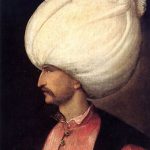Almost all our readers have heard of the seven wonders. Some might be able to name them. Fewer will know what the seven wonders of the ‘modern world’ are, and anyway naming them invariably causes dispute. The ancient wonders were the more remarkable because they were made by Man, to be seen by Man.
I am expecting to be corrected by ardent bloggers, but I believe a list of the wonders was first made up in the second century B.C. The list includes the Pyramids in Egypt at Giza. They are named as Khufu, Khafre and Menkaure as well as the Great; they were a spectacular exhibition of the skill of their architects, and the state’s ability to organise a large enough workforce, mostly slaves. The Great Pyramid made of blocks of stone up to 200 tons in weight, has been estimated to have required a labour force of 84,000 people (or a full modern football stadium), working during at least 80 days of the year – for 20 years.
Second on our ancient list come the Hanging Gardens of Babylon (attributed to Nebuchadnezzar II). This was a series of roof gardens of great size and grandeur. At the time, the Babylon of Nebuchadnezzar II was the largest city in the world.
The Statue of Zeus, King of the Gods was found at Olympia, a place in Western Greece. The Olympiad was celebrated there every four years in Zeus’ honour. The statue was designed and built by the Athenian sculptor Phidias, and was mostly constructed from gold and ivory. The Christian Roman Emperor stopped the Games in 393 A.D.
The Temple of Artemis at Ephesus was built in the 6th century B.C with a lot of financial help from Croesus, buent down in 356 B.C., rebuilt, and at last demolished completely by the Goths. I suppose one must say this is typical: after all, the word ‘vandalized’ comes from Vandal, partners in crime of the Goths.
Next came the Mausoleum of Halicarnassus, about which much more research needs to be done, though I have no doubt a bright spark will reveal all to us.
One of the most extraordinary of all these extraordinary wonders was the Colossus of Rhodes. Over thirty metres high (more than one hundred feet) this was a bronze statue of the Sun God Helios, erected by the people of Rhodes around 280 B.C. They built the statue at the entrance to their harbour to celebrate a victory over Demetrius Poliorcetes. It has not survived, except in hundreds of contemporary sketches and engravings.
Last of the seven is the Pharos of Egypt, which actually a lighthouse built by King Ptolemy III around 280 B.C., on the island of Pharos outside the harbour at Alexandria, one of the cities of the same name built by Alexander the Great (q.v.).
Only the pyramids have survived.









Leave A Comment